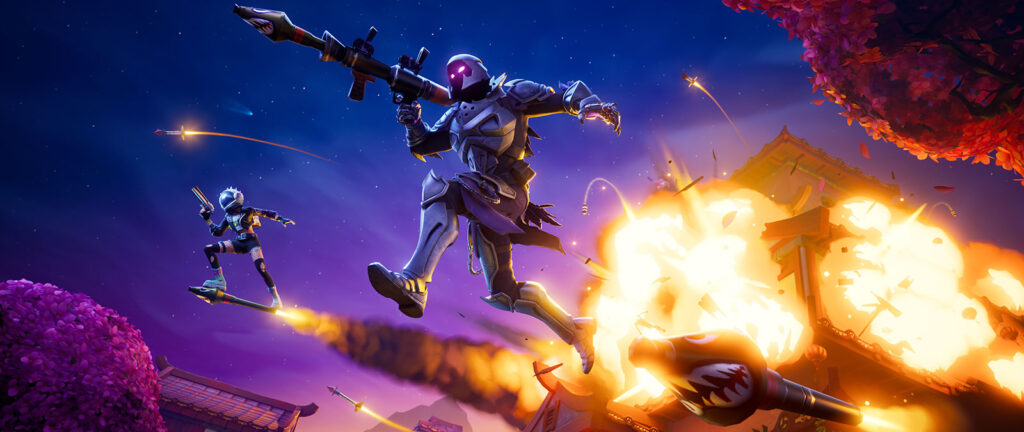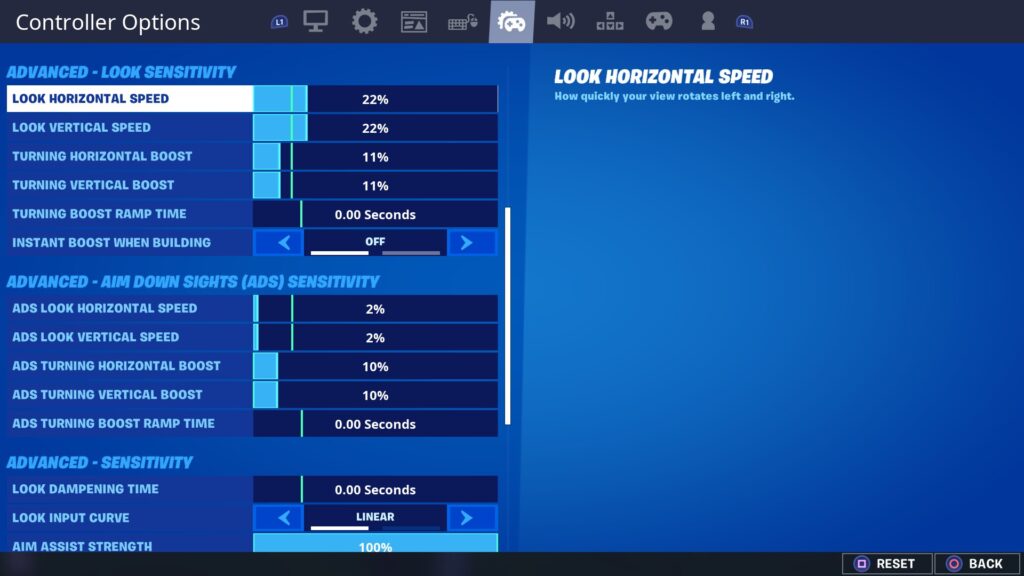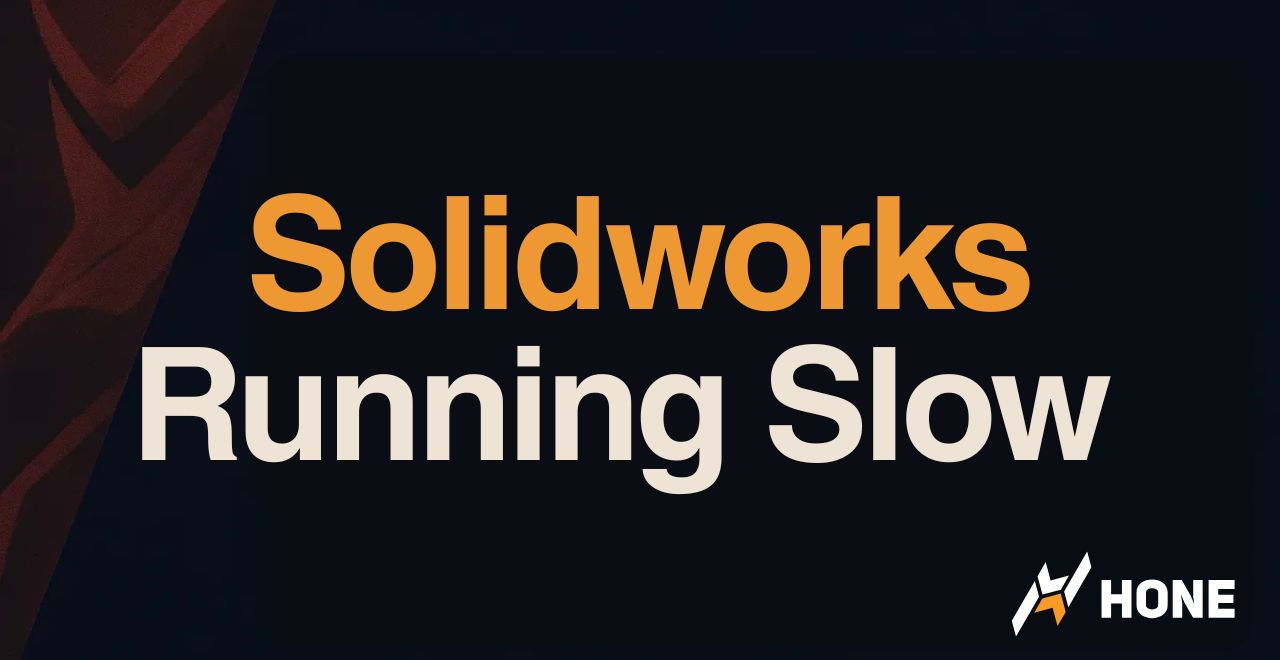The difference between 60 and 240 FPS in Fortnite? It’s the difference between watching someone build and actually hitting your shots. When every millisecond determines whether you get the elimination or the lobby, your settings better be on point.
This isn’t another generic “turn everything to low” guide. We’re diving deep into exactly which settings tank your frames and which ones actually matter; backed by real performance data, not vibes. From Unreal Engine 5’s frame-hungry features to the DLSS vs TSR debate, we’ve tested it all so your PC doesn’t have to suffer.
The 2-Minute Settings Change for Instant 50%+ FPS
Before we dive into the technical stuff, here’s the quickest path to massive FPS gains. These five changes alone will transform your game from a slideshow to silk, and they take literally two minutes.
- Switch to Performance Mode → Settings → Video → Rendering Mode → Performance (Alpha)
- Turn Shadows completely OFF → Settings → Video → Shadows → Off
- Set 3D Resolution to 75% → Settings → Video → 3D Resolution → 75% (temporary, we’ll fix this with upscaling)
- Effects to Low → Settings → Video → Effects → Low
- Post Processing to Low → Settings → Video → Post Processing → Low
Result: Most systems will see 50-100% FPS improvement. Test in Creative first to see your new frames!
Choosing Your Rendering Mode in Fortnite
Your rendering mode is the single most important decision for Fortnite performance.
Let’s break down what actually matters.
Rendering Mode Deep Dive
The DX12 First-Time Setup
Switching to DX12? It needs time to build shader caches. Your first game will stutter like crazy; this is NORMAL. Play 2-3 matches in Team Rumble to let it cache everything. After that, judge the performance. Most people give up on DX12 too early because they don’t know about this warmup period.
Quick Test: If you have an RTX card or AMD 5000/6000 series, try DX12 first. If you have GTX 1070/1080 or older, stick with DX11.
Every Fortnite Graphics Setting Ranked by FPS Impact

Not all settings are created equal. Some murder your FPS for minimal visual gain, while others barely touch performance. Here’s the exact breakdown of what to change first, backed by actual performance data.
The Big Three: Settings That Actually Matter
| Setting | Competitive Value | FPS Impact | Why It Matters |
|---|---|---|---|
| Shadows | Off | MASSIVE +53% | Biggest single FPS gain. Also improves visibility; no more enemies hiding in dark corners. |
| Effects | Low | HIGH +15% | Reduces visual clutter during fights. Easier to track enemies through explosions. |
| Post Processing | Low | HIGH +15% | Removes motion blur and other effects that make aiming harder. Cleaner image. |
Yes, shadows can sometimes help you spot enemies. But here’s the thing: the 53% FPS gain is worth infinitely more than the rare occasion where a shadow gives away position. Plus, with shadows off, enemies can’t hide in dark spots. Every single pro uses shadows off for a reason.
Strategic Settings: Performance vs Information
| Setting | Competitive | Balanced | FPS Impact | Trade-off |
|---|---|---|---|---|
| View Distance | Near | Medium/Far | MEDIUM +7% | Near = can see through some builds at render edge. Far = spot distant fights. |
| Textures | Low | Medium | LOW +2% | Mainly affects VRAM usage. Low prevents stutters on <4GB cards. |
| 3D Resolution | 100% | 100% | Variable | Use upscaling instead. Raw resolution reduction makes game blurry. |
| Motion Blur | Off | Off | LOW +5% | No debate here. Makes tracking enemies impossible. Always off. |
The View Distance Meta
Here’s something most guides won’t tell you: View Distance on “Near” creates a weird interaction where builds at the edge of render distance become semi-transparent. Some pros abuse this for free peeks in stacked endgames.
The trade-off? You can’t see build fights happening across the map. For Arena/Tournaments where zone info matters: use Medium. For Creative/Realistics where every frame counts: Near all day.
Display & Core Settings
| Setting | Optimal Value | Why |
|---|---|---|
| Window Mode | Fullscreen | Lowest input lag. Gives game exclusive display control. |
| Resolution | Native (1920×1080) | Clearest image. Use upscaling for FPS, not resolution reduction. |
| Frame Rate Limit | 240/360 or Monitor Hz | Match your monitor or go unlimited if you can handle tearing. |
| VSync | Off | Adds input delay unless paired with G-Sync/FreeSync + Reflex/AMD Anti-Lag. |
| NVIDIA Reflex | On + Boost | Reduces system latency. Boost keeps GPU clocks high. |
| Multithreaded Rendering | On | Better CPU usage unless using Performance Mode. |
Unreal Engine 5 is Deadly to Your FPS
Epic added two game-changing features with Unreal Engine 5: Nanite and Lumen. They look incredible, and absolutely demolish your framerate. Here’s whether they’re worth it (spoiler: for competitive play, they’re not).
Nanite Virtualized Geometry
What it does: Film-quality 3D models with billions of polygons, no LOD pop-in
Performance hit: -20% FPS minimum, up to -40% with Virtual Shadows
CPU/GPU: Extremely CPU intensive
Competitive verdict: Always OFF
Nanite is impressive tech that has no place in competitive Fortnite. It makes rocks look photorealistic while your CPU begs for mercy. The performance hit varies by area: Tilted Towers with Nanite on will turn your 240 FPS into 140 real quick.
Lumen Global Illumination & Reflections
What it does: Dynamic lighting that bounces realistically, real-time reflections
Performance hit: GI Epic = -50% FPS (!), Reflections = -6% to -13%
CPU/GPU: GPU destroyer
Competitive verdict: OFF unless you hate frames
The $2000 GPU Tax
Want to run Lumen at Epic with 144+ FPS? Hope you have an RTX 4090. Even then, you’re choosing pretty lights over competitive advantage. Here’s the thing: your opponents with everything on low will see you just as clearly while running at 400 FPS.
Middle ground: If you absolutely must have some eye candy, Lumen GI on “High” instead of “Epic” recovers +21% FPS. Still not worth it for comp, but at least playable.
| UE5 Feature | Off → Epic Impact | Actual Visual Benefit | Use Case |
|---|---|---|---|
| Virtual Shadows | -53% FPS | Softer shadow edges | Screenshots only |
| Nanite Geometry | -20 to -40% FPS | No LOD pop-in | Content creation |
| Lumen GI | -50% FPS | Realistic lighting | Never in matches |
| Lumen Reflections | -6 to -13% FPS | Accurate reflections | Cinematic replays |
| Hardware Ray Tracing | -30%+ FPS | Slightly better reflections | Literal insanity |
DLSS vs TSR vs FSR
Upscaling is free FPS; when done right. But Fortnite’s implementation is… interesting. NVIDIA might be sandbagging their own DLSS to make Epic’s TSR look better. Here’s what actually works.
Upscaling Technology Breakdown
| Technology | GPU Support | Best Mode | FPS Gain | Image Quality |
|---|---|---|---|---|
| NVIDIA DLSS | RTX only | Quality/Balanced | +40-60% | Usually best (but check below) |
| TSR (Native) | All GPUs | TSR Medium/High | +30-50% | Surprisingly good |
| Intel XeSS | All GPUs (best on Arc) | Quality | +35-45% | Good alternative |
| AMD FSR | Not in Fortnite | — | — | Use TSR instead |
Here’s the tea: Fortnite reportedly uses DLSS 2.2 (ancient) instead of newer versions. Why? Some think Epic intentionally uses old DLSS to make their native TSR look competitive. Unreal Engine is Epic’s baby, after all.
What this means: Don’t assume DLSS is automatically best. Test TSR Medium and TSR High; you might be shocked at how good they look while giving similar FPS gains.
The Secret TSR Performance Mode
Players discovered that “TSR Low” combined with a hidden “Performance preset” gives insane FPS while looking nearly as good as TSR Epic. The exact config seems to change with patches, but it’s worth experimenting with TSR Low; it might be the secret sauce for 360+ FPS without looking like garbage.
Quick test: Set TSR to Low, play a match. If it looks acceptable, you just found 50% more frames. If not, bump to Medium.
- RTX Card? Try DLSS Quality first, but also test TSR Medium
- AMD/Intel/GTX? TSR Medium or High is your best bet
- Need MAX frames? TSR Low (test if quality is acceptable)
- 4K Monitor? DLSS Performance or TSR Low is mandatory
- Avoid: Frame Generation (DLSS 3/FSR 3) – adds input lag!
What the Fortnite Pros Actually Use

Forget the YouTube thumbnails claiming “BUGHA’S SECRET SETTINGS.” Here’s what top players actually run, why they choose these configs, and what you can learn from them.
- Rendering ModePerformance
- ShadowsOff
- View DistanceNear/Medium
- EffectsLow
- Post ProcessingLow
- DLSS/TSROff or TSR Low
- Target FPS360 Stable
- Rendering ModeDirectX 12
- ShadowsMedium
- View DistanceEpic
- EffectsHigh
- Post ProcessingEpic
- DLSS/TSRDLSS Quality
- LumenSometimes On
- Rendering ModeDirectX 12
- ShadowsOff
- View DistanceFar
- EffectsLow
- Post ProcessingLow
- DLSS/TSRTSR High
- Target FPS240 Locked
The Dirty Secret About Pro Settings
Most pros don’t actually optimize their settings; they just copy what everyone else uses. Performance Mode became standard not because every pro tested it, but because a few big names switched and everyone followed.
The real lesson? Test everything yourself. Your 5800X3D might love DX12 while your friend’s 10900K runs better on DX11. Your specific hardware combination is unique.
The Complete Fortnite Optimization Checklist
Ready to transform your Fortnite experience? Work through this list systematically. Test after each major change to see what helps YOUR specific setup.
Step 1: Choose Your Path
- ☐ Max FPS: Performance Mode → All Low → No upscaling
- ☐ Balanced: DX12 → Strategic settings → TSR/DLSS
- ☐ Pretty: Keep reading other guides
Step 2: Core Settings (Everyone)
- ☐ Window Mode → Fullscreen
- ☐ Resolution → Native (1920×1080)
- ☐ Frame Rate → 240/360 or Monitor Hz
- ☐ VSync → OFF
- ☐ Motion Blur → OFF
Step 3: The Big Three
- ☐ Shadows → OFF (+53% FPS)
- ☐ Effects → Low (+15% FPS)
- ☐ Post Processing → Low (+15% FPS)
Step 4: Strategic Choices
- ☐ View Distance → Near (comp) or Medium (general)
- ☐ Textures → Low (unless 6GB+ VRAM)
- ☐ 3D Resolution → 100% (use upscaling instead)
Step 5: UE5 Features
- ☐ Nanite → OFF
- ☐ Lumen GI → OFF
- ☐ Lumen Reflections → OFF
- ☐ Virtual Shadows → OFF
- ☐ Hardware Ray Tracing → OFF
Step 6: Upscaling (If Needed)
- ☐ RTX Card → Test DLSS Quality AND TSR Medium
- ☐ Other GPUs → TSR Medium/High
- ☐ Need more FPS → Try TSR Low
Step 7: Final Tweaks
- ☐ NVIDIA Reflex → On + Boost (test stability)
- ☐ Multithreaded Rendering → On
- ☐ Test in Creative Matchmaking (real load)
- ☐ Run 3 games before judging DX12
Final Thoughts
Here’s what most guides miss: raw FPS isn’t everything. A stable 240 FPS feels infinitely better than 400 FPS that fluctuates all the time and therefore being unstable. The 1% lows also matter more than peak numbers.
The “best” settings are the ones that give YOU consistent, smooth gameplay on YOUR hardware. That RTX 4090 beast might run better on DX12 with medium shadows, while your trusty GTX 1660 needs Performance Mode to shine. There’s no shame in any config that gets you to your target framerate.
Remember: every frame you gain from optimization is a frame you didn’t have to pay for with new hardware. These settings can literally double your FPS for free. That’s a better upgrade than any graphics card.
Now stop reading about settings and go test them. Your 90s are waiting.
FAQs
What is the best FPS setting for Fortnite?
The best FPS setting depends on your monitor’s refresh rate. For 60 Hz displays, cap at 60 FPS. For 120 Hz or 144 Hz monitors, match the FPS cap. High-end PCs can aim for uncapped FPS, but make sure to balance with performance stability.
How to get 120 FPS in Fortnite?
Lower in-game graphics settings, set FPS cap to 120, and ensure your hardware meets requirements. Play in “Performance Mode” for extra frames and keep drivers updated.
How to get max FPS in Fortnite?
Switch to “Performance Mode,” lower graphics settings, cap FPS as high as possible, and update your GPU drivers. Close unnecessary apps and consider upgrading hardware if needed.
How to get 240 FPS in Fortnite?
You’ll need at least a mid-range gaming rig, a 240 Hz monitor, and settings optimized for speed. Set “Performance Mode,” lower resolutions, and disable background apps. Upgrading to a powerful GPU and CPU is key if you’re trying to reach numbers like 240 – 360FPS, or even higher.






 Discord
Discord
 Instagram
Instagram
 Youtube
Youtube
 TikTok
TikTok